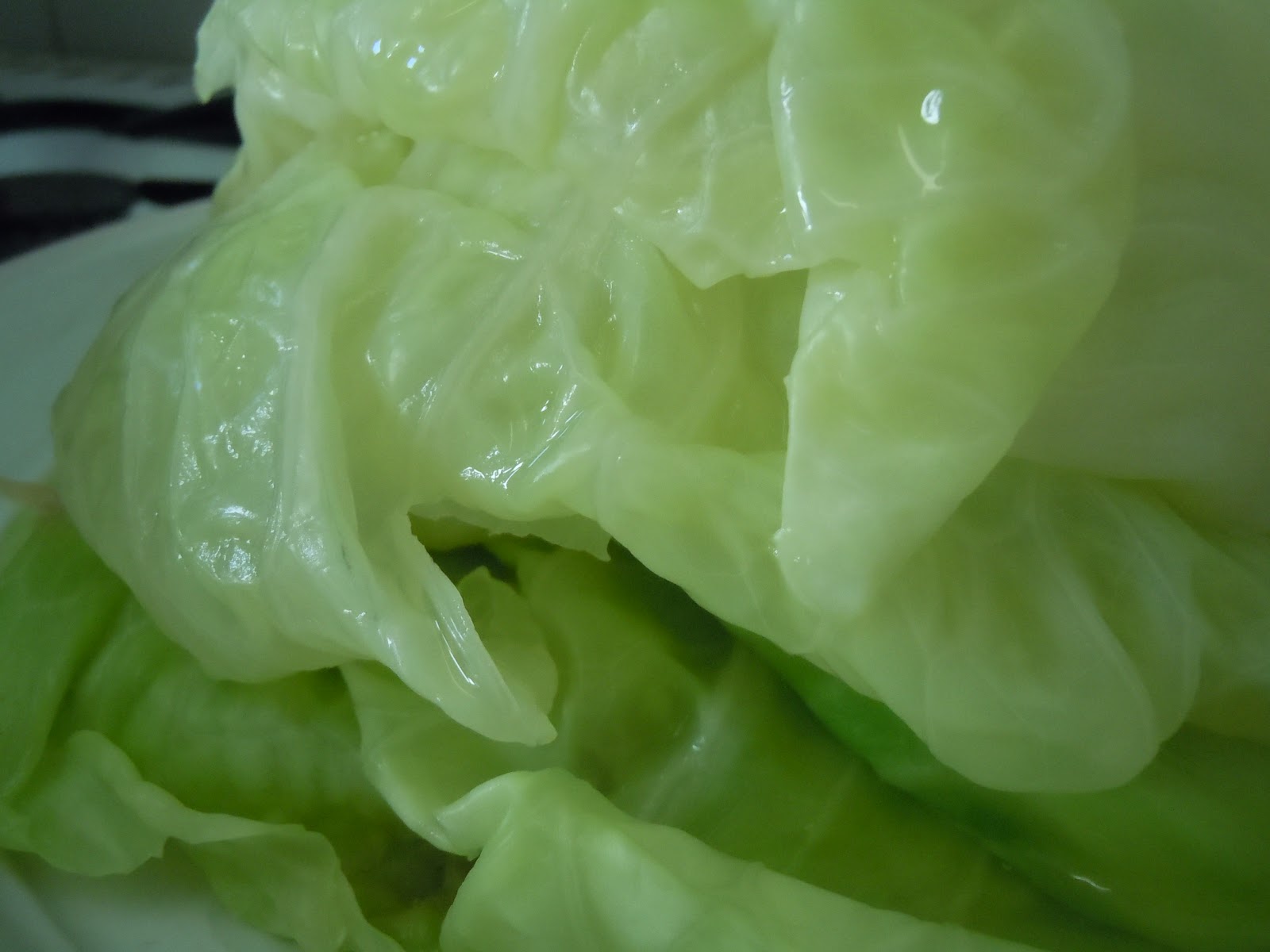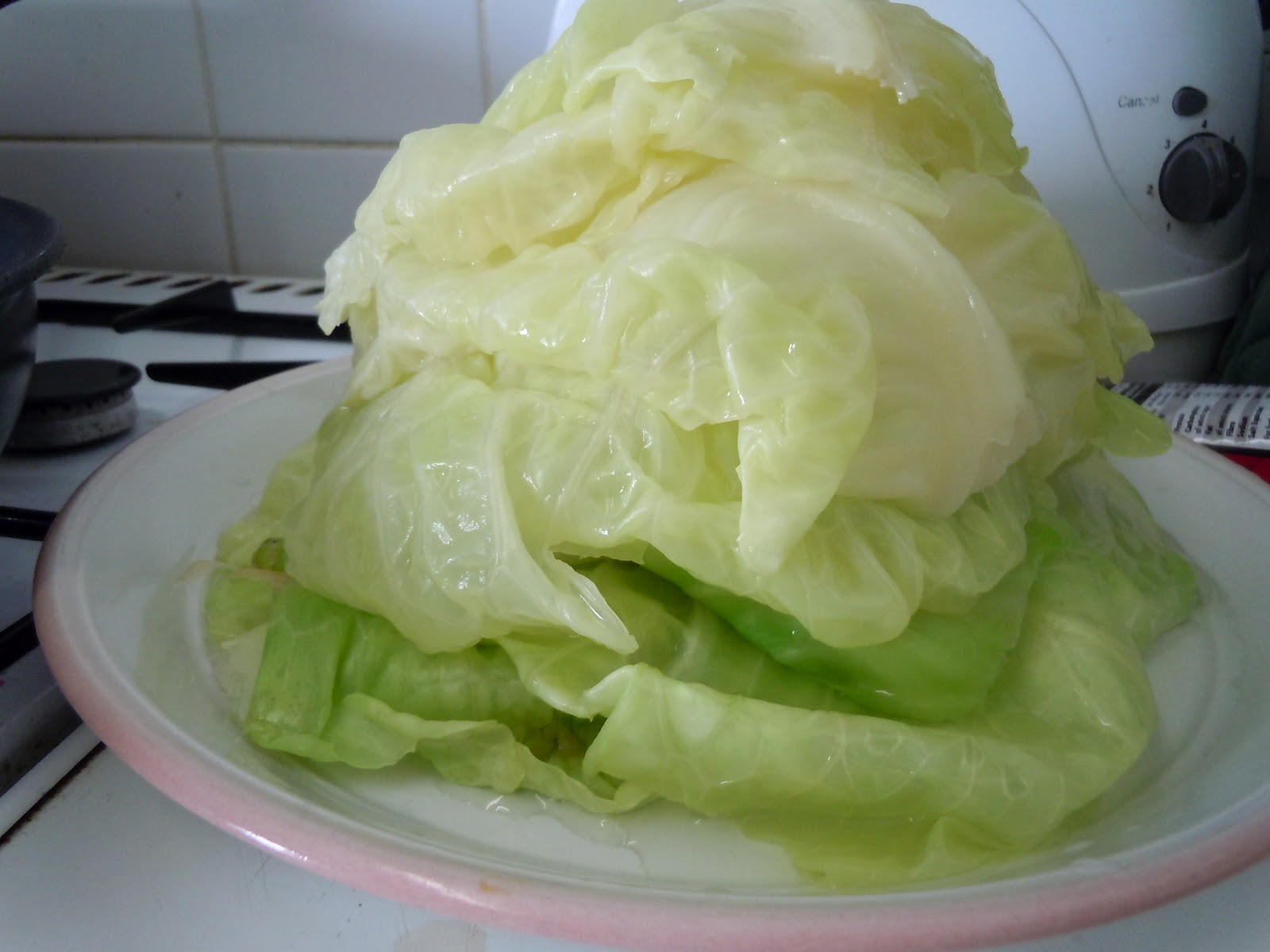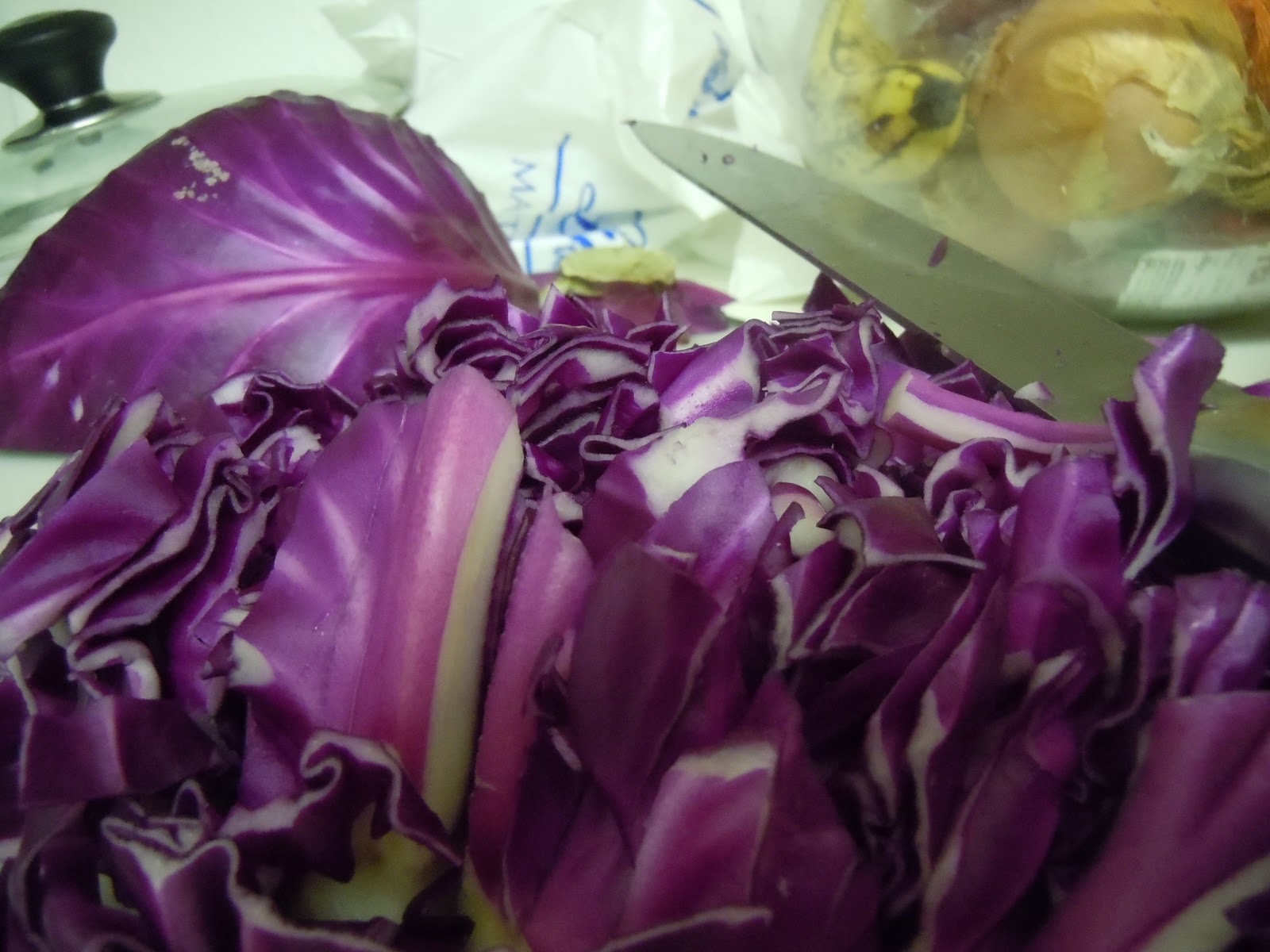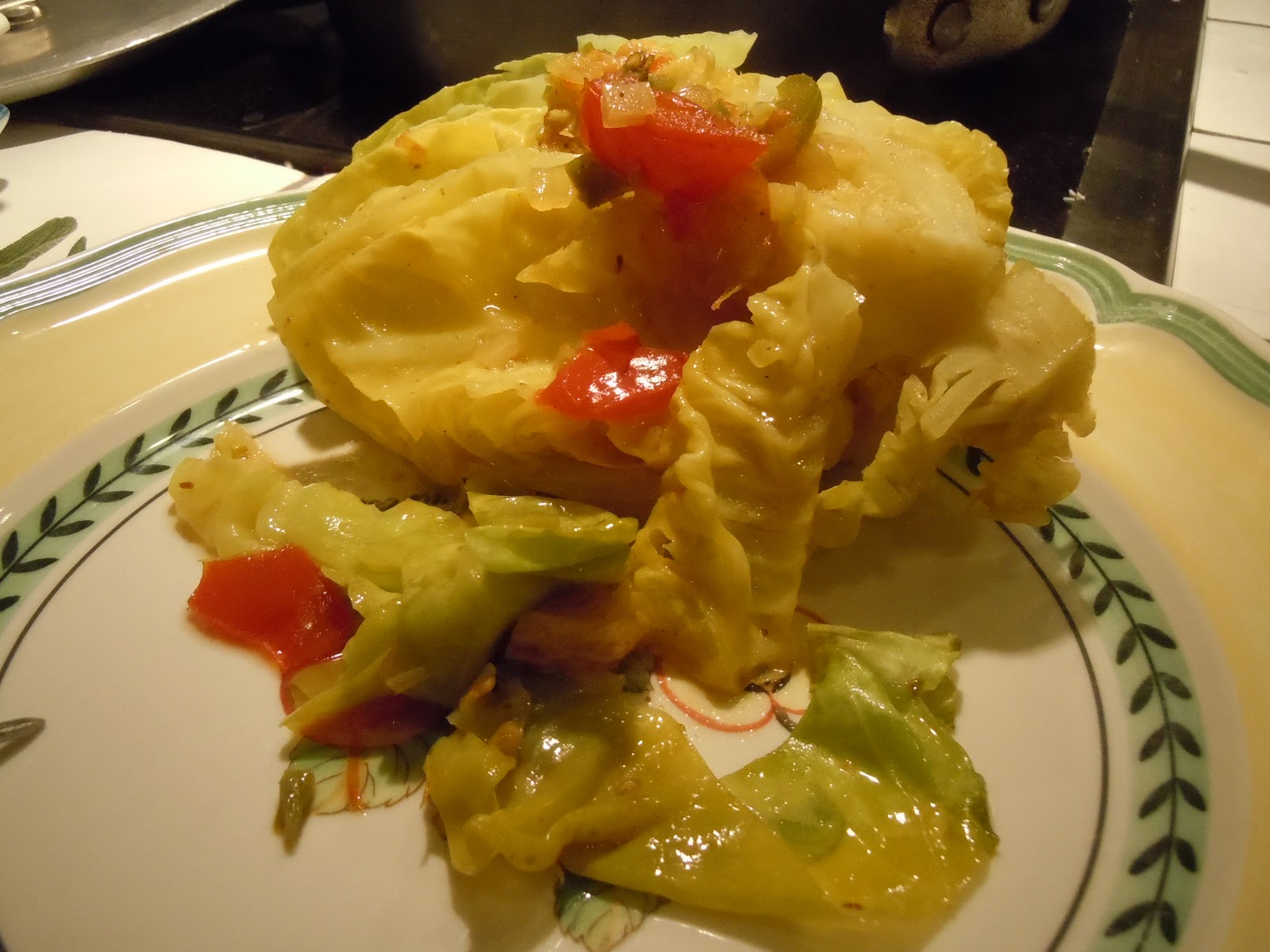We have an abundance of cabbage. All kinds. And there are only so many times you can make coleslaw or braise the things. Desperate to get rid of the volleyball-sized sphere on our kitchen counter, the NY Times yet again came to our rescue. The article may as well have been titled: "When you're sick of coleslaw...".
I served these as an appetizer at a recent dinner party and they were a hit with everyone. I recommend about 2 stuffed leaves per person as a starter (always leave them wanting more!).
Ingredients
12 large cabbage leaves (about 2 pounds)
1/4 cup olive oil
1 large red or white onion, finely chopped
Salt to taste
1 1/4 cups quick-cook long-grain or basmati rice, rinsed and drained
4 tablespoons pine nuts
4 garlic cloves (to taste), minced
1/3 cup chopped fresh dill
1/3 cup finely chopped mint
1/2 cup finely chopped flat-leaf parsley
Freshly ground pepper to taste
1/3 to 1/2 cup strained freshly squeezed lemon juice
2 tablespoons tomato paste
1 lemon, sliced
1. Bring a large pot of water to a boil and blanch the cabbage leaves, a few at a time, for 2 to 3 minutes, until they are flexible. Transfer from the pot to a bowl of cold water, then drain and set aside. Cut out the thickest part of the base of the center rib by notching a 1- to 1 1/2-inch V at the base. This will make the leaves easier to roll up.
2. Heat 2 tablespoons of the olive oil over medium-low heat in a large nonstick skillet and add the onion and a pinch of salt. Cook, stirring, until it is tender but not browned, 5 to 8 minutes. Add the pine nuts and garlic, stir together and add the drained rinsed rice. Stir for a minute or two, until you hear the rice begin to crackle, then remove from the heat. Toss with the herbs, salt, white pepper, nutmeg, and black pepper pepper and 1 tablespoon olive oil. To gauge how much salt you will need, use the amount that you would use when cooking 1 1/4 cups of rice (I used about 1 teaspoon).
 |
| Roll the parcels with the V-shape facing you. |
3. Lightly oil a heavy flame-proof or lidded skillet. Place a leaf on your work surface in front of you, with the wide ribbed bottom closest to you. Place 2 rounded tablespoons of the rice mixture on top of the leaf. Roll the leaf over once, and tuck in the sides. Continue to roll the leaf into a tight package. Place in the pan. Fill and roll the remaining leaves and pack them into the pan. You will probably need to stack two layers of the filled leaves.
4. Whisk together the lemon juice, remaining oil and tomato paste with 2 tablespoons water. Season to taste with salt. Pour over the cabbage rolls. Add enough water to barely cover the rolls. Invert a plate and place it on top of the rolls to keep them wrapped and in position. Bring to a simmer over medium heat, cover the pan, turn the heat to low and simmer for 45 minutes to an hour, at which point the cabbage leaves will be tender and the rice cooked. Remove from the heat and carefully remove the stuffed leaves from the water to a platter or to plates with a slotted spoon or tongs. Taste the liquid left in the pot and adjust the seasoning. Serve the rolls warm with the liquid from the pot as a sauce.
Yield: 6 servings.






